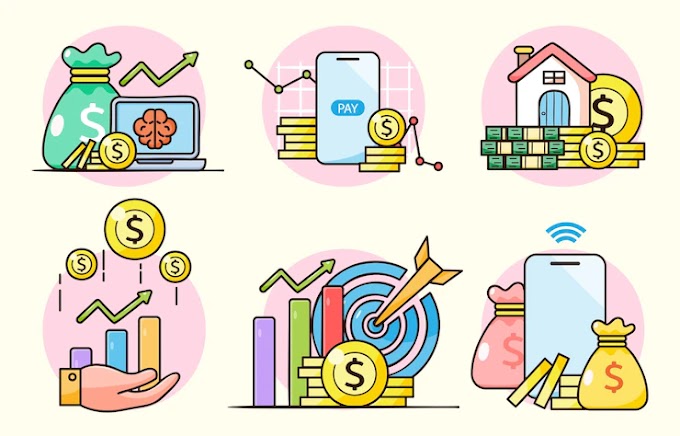Money is a medium of exchange that is widely used in transactions for goods and services. It's a means of measuring and assigning value to goods and services, enabling trade and commerce to take place more efficiently. Money comes in many forms, from coins and paper bills to digital currency and stored value cards. It can be used for buying, selling, and trading goods and services, and it also serves as a store of value. While money can be a powerful tool for improving people's lives, it can also be a source of stress and anxiety, especially when individuals don't have enough of it to meet their basic needs.
 |
| Image Source Click Here |
Money has a long and fascinating history, dating back thousands of years. It has evolved over time, from bartering and trading of goods to the development of currencies like coins and paper bills. Today, money is largely digital and can be accessed and managed through online accounts and mobile apps. The modern economy relies heavily on money as a means of exchange, and the value of money is determined by a complex system of supply and demand, monetary policy, and other economic factors. Understanding the role and impact of money is essential for managing personal finances and participating in the global economy.
16 Fascinating Facts About Money You Probably Didn't Know
1. Money is made of cotton and linen
Most paper money in the United States is actually made of a blend of 75% cotton and 25% linen. This is why money is more durable and can withstand wear and tear.
2. The lifespan of a dollar bill is just 18 months
Despite being made of durable materials, the average lifespan of a dollar bill is just 18 months due to how frequently it's circulated.
3. Most money is digital
Today, the vast majority of money is held digitally in banks and online accounts, with physical cash making up just a small percentage of the world's total money supply.
4. Money can be traced back over 4,000 years
The concept of money has been around for thousands of years, with the first known coins being minted in Lydia, a kingdom in western Asia Minor, around 600 BC.
5. The largest denomination of currency ever printed was the 100,000 dollar bill
The 100,000 dollar bill, featuring Woodrow Wilson, was printed in 1934 but was never actually circulated among the public.
6. The $1 bill is the most counterfeited
Because of its widespread use, the $1 bill is the most counterfeited denomination of U.S. currency.
7. The U.S. Treasury has never run out of money
Despite public fears and economic downturns, the U.S. Treasury has never run out of money or defaulted on its debt obligations.
8. Money can be a source of stress
Financial stress can have a significant impact on mental health, with studies showing that money is consistently one of the top sources of stress for Americans.
9. Money can be dirty
Research has found that paper money can harbor thousands of bacteria and viruses, making it a potentially dangerous vector for disease transmission.
10. The color of money varies by country
Different countries use different colors and designs on their money to make it easier to distinguish between denominations.
11. The word "salary" comes from the Latin word for salt
The word "salary" comes from the Latin word "salarium," which was originally a payment made to Roman soldiers to buy salt.
12. The penny costs more to make than it's worth
Due to the high cost of production, the U.S. penny actually costs more to make than it's worth.
13. The first ATM was installed in 1967
The world's first ATM was installed by Barclays Bank in London in 1967, revolutionizing the way people access and manage their money.
14. Money can be used to track disease outbreaks
Researchers have found that analyzing the way people use their credit and debit cards can help track the spread of infectious diseases.
15. Money can't buy happiness
Studies consistently show that while money can help improve quality of life up to a certain point, beyond that point it has diminishing returns on happiness.
16. Money can have a positive impact
When used responsibly and with purpose, money can be a powerful tool for improving the lives of individuals and communities, from funding education to supporting charitable causes.






0 Komentar